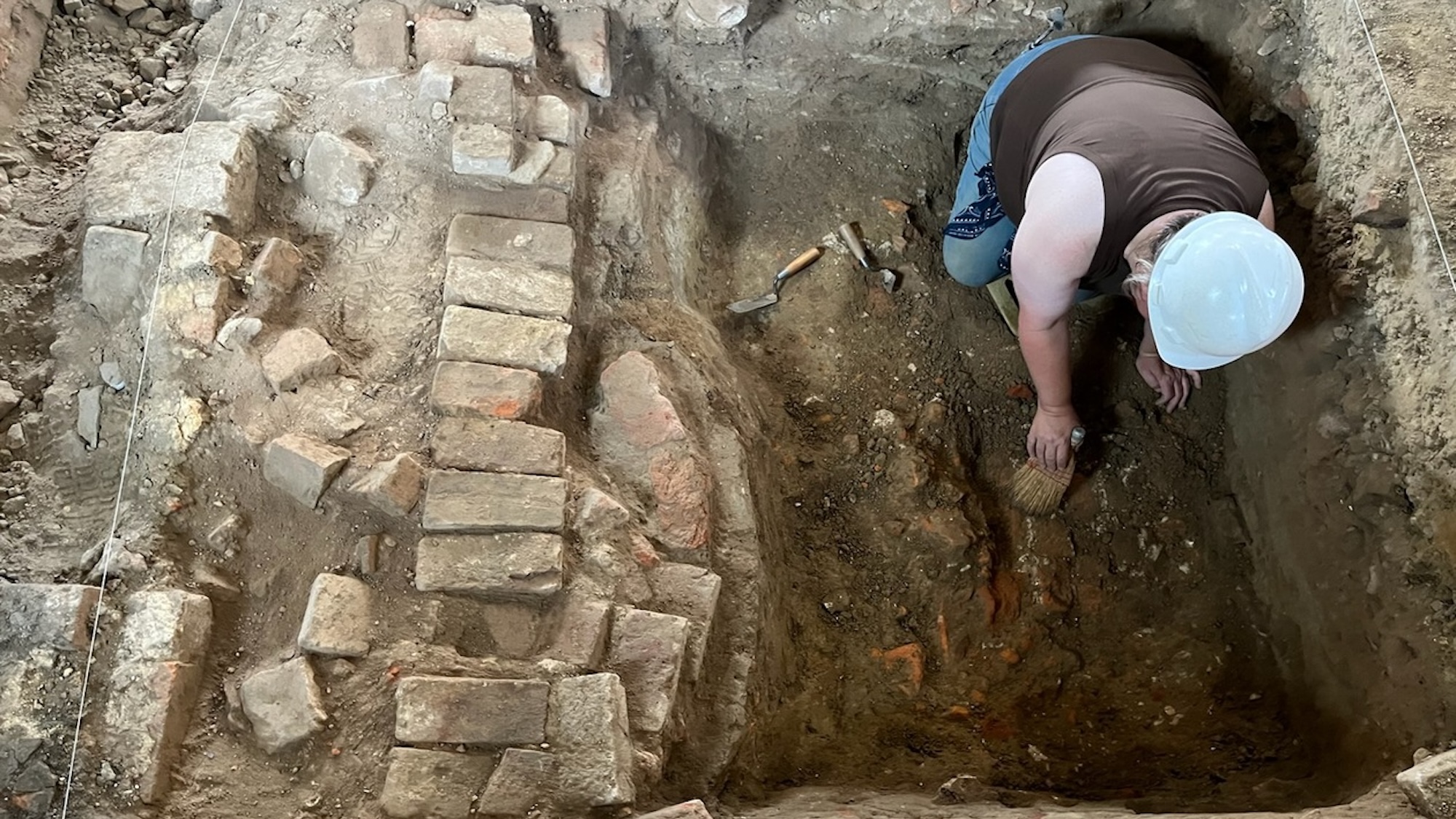
Get the Popular Science daily newsletter💡
Breakthroughs, discoveries, and DIY tips sent every weekday.
Archaeologists at the College of William & Mary in Virginia recently made a surprising discovery containing centuries’ worth of history. During preliminary investigation work ahead of a building renovation project, archaeologists located the nearly complete foundation belonging to the Williamsburg Bray School.
The Bray School opened in 1760 and was North America’s first institution to educate both enslaved and free Black children. However, the Bray School’s underlying goals offer a stark example of the dehumanizing ideologies that trace back to America’s earliest days.

‘Biblically ordained’ societal roles
Founded at the suggestion of Benjamin Franklin, the Williamsburg Bray School opened under the direction of local schoolteacher Ann Wager 16 years before the American Revolution. Beginning at 7 a.m. during the winter and 6 a.m. in the summer, Wager taught reading to all of the school attendees–and needlework to the girls. The basis of education at the Bray School tied directly to Church of England doctrine, with a particular focus on understanding the Bible and the Anglican Book of Prayer. Wager often assigned homework on Sundays, to ensure her students “may be prevented from spending the Lord’s Day profanely or idly.” Colonial Williamsburg’s official site for the Bray School notes that 93 percent of the 3 to 10 year-old students were enslaved, but only 86 names have been identified in records.
The Bray School’s founders weren’t abolitionists. The institution’s primary motive was to convince Black students that their subordinate societal roles were biblically ordained. “These enslaved individuals helped to maintain their enslavers’ households and contributed to their businesses,” explains the museum curators. “In some cases, enslavers might have hoped the skills they developed at the school would make them ‘more useful to their Owners.’”
Despite the Bray School’s objective, at least one child found other uses for his education. In 1774, an enslaved former student named Isaac Bee escaped his plantation. A discerning characteristic mentioned in the public notice of his escape? “He can read.”
From schoolhouse to dorm to dig site
The Bray School moved to another location in 1765 before finally closing in 1774. But the building itself received multiple expansions under various owners until the early 20th century. In 1930, the structure was relocated onto the William & Mary campus and renamed Brown Hall, where it served as a dormitory for some of the nation’s first women to attend college. By that point, the building was nearly unrecognizable and its earliest purpose was lost to history.
It would take years for historians and archaelogists to confirm Brown Hall’s true identity over the course of multiple digs starting in 2011. The original structure was carefully exhumed from its surrounding add-ons and transported a half-mile to its current home in Colonial Williamsburg in 2023. Although, relocators apparently left a portion of the earliest building—and some newer additions—at its former address on William & Mary’s campus.
Experts first detected evidence of the original 18th-century structural remains earlier this year ahead of plans to renovate the site. Subsequent excavation work revealed not only the Bray School’s nearly complete foundation, but a roughly 36-by-18-foot cellar.
“It looks like the cellar was a partial cellar, and had different floor levels potentially,” W&M Center for Archaeological Research researcher Tom Higgins said in a statement. “It’s not a brick-lined cellar—it was probably dug soon after the foundations were laid.”

Some of the earliest artifacts recovered during the dig date back nearly three centuries and include colonoware pottery—handmade ceramics frequently found in enslaved and Indigenous communities. Archaeologists also noted items representative of the site’s uses after the Bray School closed. Dorm residents left reminders of everyday life such as pencil fragments, buttons, jewelry, and even home decor. One glass shard clearly depicts Minerva, the Roman goddess of wisdom, war, justice, and the arts.
“We know that the girls at Brown Hall were furnishing their dorms. So maybe they were bringing in things like this,” said senior researcher Michele Brumfield.
But while Brown Hall represented a pivotal moment in the struggle for women’s rights, the structure’s original purpose is more complicated. The public will soon be able to see some of the artifacts on display at William & Mary, while the relocated Bray School is opening to Colonial Williamsburg visitors. Taken altogether, the building and relics represent some of the country’s most complex, difficult, and painful facets.

More deals, reviews, and buying guides
The PopSci team has tested hundreds of products and spent thousands of hours trying to find the best gear and gadgets you can buy.
























